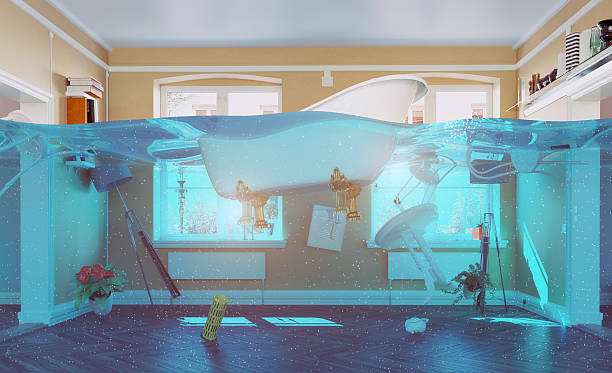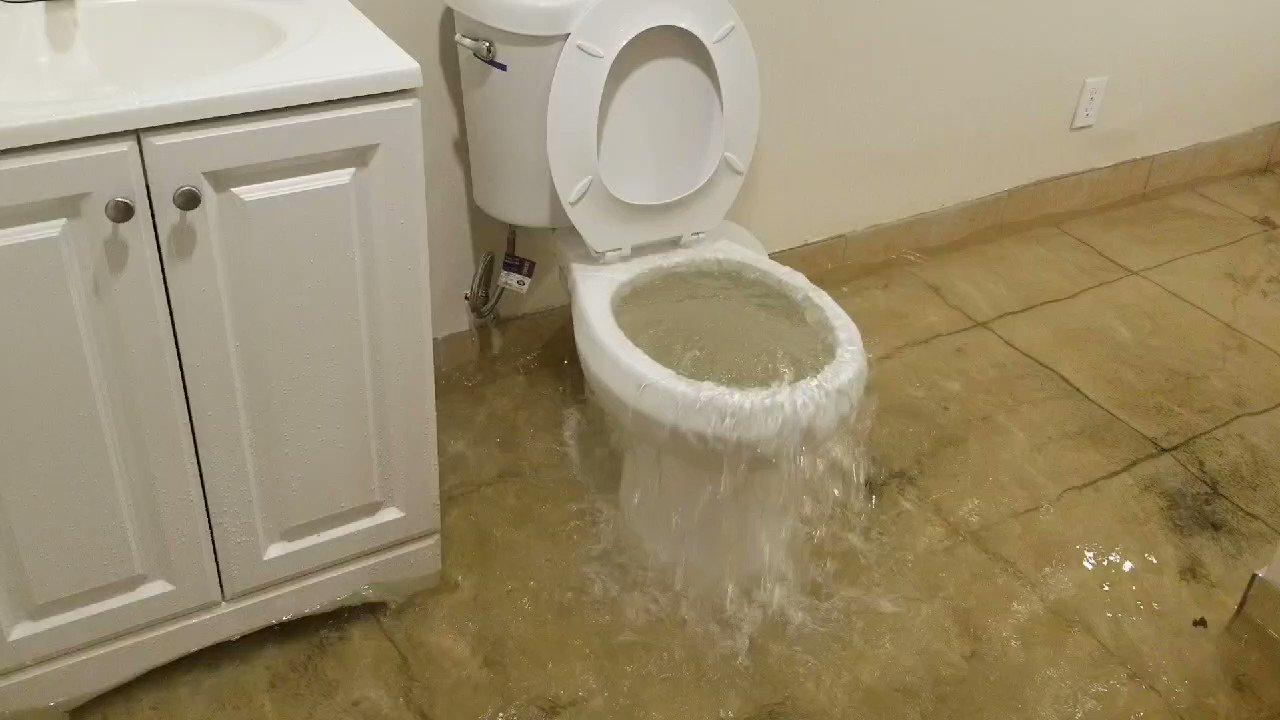Just How to Avoid Bathroom Water Damage
Visit Our WebsiteThey are making a few good pointers relating to How to Repair and Prevent Bathroom Water Damage? in general in the article following next.

Water damage commonly happens in the shower room because of the water utilized day-to-day. In some cases, the damages could be a little mold from the shower. Other times, it's substantial damage on your flooring. Whatever it is, it is always good to recognize the cause as well as stop it before it occurs.
This overview will undergo several of the usual reasons for water damage in the shower room. We will certainly also examine what you can do to avoid these reasons from damaging your restroom. Allow's dive in.
5 Usual Causes of Water Damage in Shower Rooms
These are the usual reasons you would have water damage in your shower rooms and also how you can find them:
Ruptured or Dripping Pipelines
There are many pipes carrying water to various parts of your shower room. Some pipelines take water to the toilet, the sink, the taps, the shower, as well as lots of various other areas. They crisscross the small area of the restroom.
Every now and then, these pipelines could get rusty and burst. Various other times, human activity might trigger them to leakage. When this takes place, you'll locate water in the edges of your washroom or on the wall.
To spot this, look out for bubbling walls, mold and mildews, or mold. Call an expert emergency situation plumbing professional to repair this when it takes place.
Splits in your wall surface floor tilesv
Washroom wall surface floor tiles have been particularly made for that purpose. They shield the wall from moisture from people taking showers. However, they are not unbreakable.
In some cases, your shower room wall surface floor tiles split and also permit some dampness to permeate right into the wall surface. This can possibly damage the wall surface if you do not take any kind of activity. If you see a split on your wall surface floor tiles, repair it quickly. Do not wait up until it destroys your wall.
Overflowing toilets and also sinks
As human beings, occasionally we make blunders that can create some water damage in the shower room. As an example, leaving your sink faucet on might trigger overflowing and damage to various other parts of the washroom with dampness.
Additionally, a malfunctioning commode can create overruning. As an example, a busted commode take care of or various other parts of the tank. When this occurs, it might harm the floor.
As soon as you discover an overflowing sink or toilet, call a plumber to aid manage it promptly.
Roofing Leaks
Occasionally, the trouble of water damage to the shower room might not come from the washroom. For instance, a roofing system leakage can trigger damage to the washroom ceiling. You can identify the damage done by looking at the water spots on the ceiling.
If you discover water stains on your ceiling, examine the roofing system to see if it's damaged. After that, call an expert to aid resolve the issue.
Excess Dampness
It's great to have that long shower and also sprinkle water while you dance around as well as act like you're executing, however sometimes these acts can trigger water damage to your bathroom.
Sprinkling water around can cause water to visit edges as well as form mold and mildews. Watch exactly how you spread excess dampness around, and when you do it, clean it up to stop damage.
Verdict
Water damage to your restroom can be aggravating. However, you can manage it if you prevent a few of the reasons discussed in this overview. Call an expert emergency situation plumbing if you notice any type of extreme damage.
How to Repair a Water-Damaged Wall in the Bathroom
All you need to know to repair bathroom wall water damage – from identifying the water source to finishing the repair professionally. If you don’t act quickly to resolve a water damage problem, you could find that it develops into a mold issue and/or cause structural damage to your home. Follow this guide to repair your bathroom before it's too late.
All you need to know to repair bathroom wall water damage
Water damage is a common household problem, and one that, if left unrepaired, can quickly lead to structural problems and health issues. The two most likely rooms where water damage may occur is the bathroom and the kitchen – where water is used often and there is high humidity.
What is water damage?
It is easy to think of water damage as caused by a flood or leaking tap or burst water pipe. However, when water damage is assessed, there are three main categories into which water falls (as classified by the American National Standards Institute). These categories are defined as:
Category 1 Water – ‘Clear Water’
This is sanitary water. There is usually no major threat to health by washing with this water, drinking it, or inhaling if it is streaming. Most water that enters your home will be category 1 water, while most water leaving your home will be either category 2 or 3 water. It may also come from melting snow, rainwater and water tanks.
Damage caused by this type of water can usually be repaired or restored, though this doesn’t mean that there are no potential health issues.
Category 2 Water – ‘Grey Water’
This is contaminated water – sometimes considerably so – and will cause illness if consumed or if it comes into contact with your skin. Water damage in this category is often caused by overflows from toilet bowls, and damage to washing machines and dishwashers. While damaged items might still be repaired or restored after damage by grey water, it is more difficult and more expensive to do so.
If the water damage in your home has been caused by grey water, it is advisable to have repairs made by professionals.
Over time, grey water will deteriorate and become black water.
Category 3 Water – ‘Black Water’
Category 3 water, also known as black water, is highly contaminated and a great risk to health. This may contain raw sewage, heavy metals, and other toxic substances. It will smell terrible.
If this is the water that has caused damage in your bathroom, do not touch it. Stop the water flowing if possible, seal the room and call the experts: it really isn’t worth the risk of ill health and disease that could be fatal. It is very unlikely that items can be repaired or restored if they have been damaged by black water.
https://www.porterscleaning.com/blog/how-to-repair-a-water-damaged-wall-in-the-bathroom/

How to Repair a Water-Damaged Wall in the Bathroom
All you need to know to repair bathroom wall water damage – from identifying the water source to finishing the repair professionally. If you don’t act quickly to resolve a water damage problem, you could find that it develops into a mold issue and/or cause structural damage to your home. Follow this guide to repair your bathroom before it's too late.
All you need to know to repair bathroom wall water damage
Water damage is a common household problem, and one that, if left unrepaired, can quickly lead to structural problems and health issues. The two most likely rooms where water damage may occur is the bathroom and the kitchen – where water is used often and there is high humidity.
What is water damage?
It is easy to think of water damage as caused by a flood or leaking tap or burst water pipe. However, when water damage is assessed, there are three main categories into which water falls (as classified by the American National Standards Institute). These categories are defined as:
Category 1 Water – ‘Clear Water’
This is sanitary water. There is usually no major threat to health by washing with this water, drinking it, or inhaling if it is streaming. Most water that enters your home will be category 1 water, while most water leaving your home will be either category 2 or 3 water. It may also come from melting snow, rainwater and water tanks.
Damage caused by this type of water can usually be repaired or restored, though this doesn’t mean that there are no potential health issues.
Category 2 Water – ‘Grey Water’
This is contaminated water – sometimes considerably so – and will cause illness if consumed or if it comes into contact with your skin. Water damage in this category is often caused by overflows from toilet bowls, and damage to washing machines and dishwashers. While damaged items might still be repaired or restored after damage by grey water, it is more difficult and more expensive to do so.
If the water damage in your home has been caused by grey water, it is advisable to have repairs made by professionals.
Over time, grey water will deteriorate and become black water.
Category 3 Water – ‘Black Water’
Category 3 water, also known as black water, is highly contaminated and a great risk to health. This may contain raw sewage, heavy metals, and other toxic substances. It will smell terrible.
If this is the water that has caused damage in your bathroom, do not touch it. Stop the water flowing if possible, seal the room and call the experts: it really isn’t worth the risk of ill health and disease that could be fatal. It is very unlikely that items can be repaired or restored if they have been damaged by black water.
https://www.porterscleaning.com/blog/how-to-repair-a-water-damaged-wall-in-the-bathroom/
I was guided to that write-up on How to Repair and Prevent Bathroom Water Damage? from someone on another web address. Are you aware of somebody who is in the market for the topic? Take a moment to promote it. Thanks so much for going through it.
Get A Free Estimate